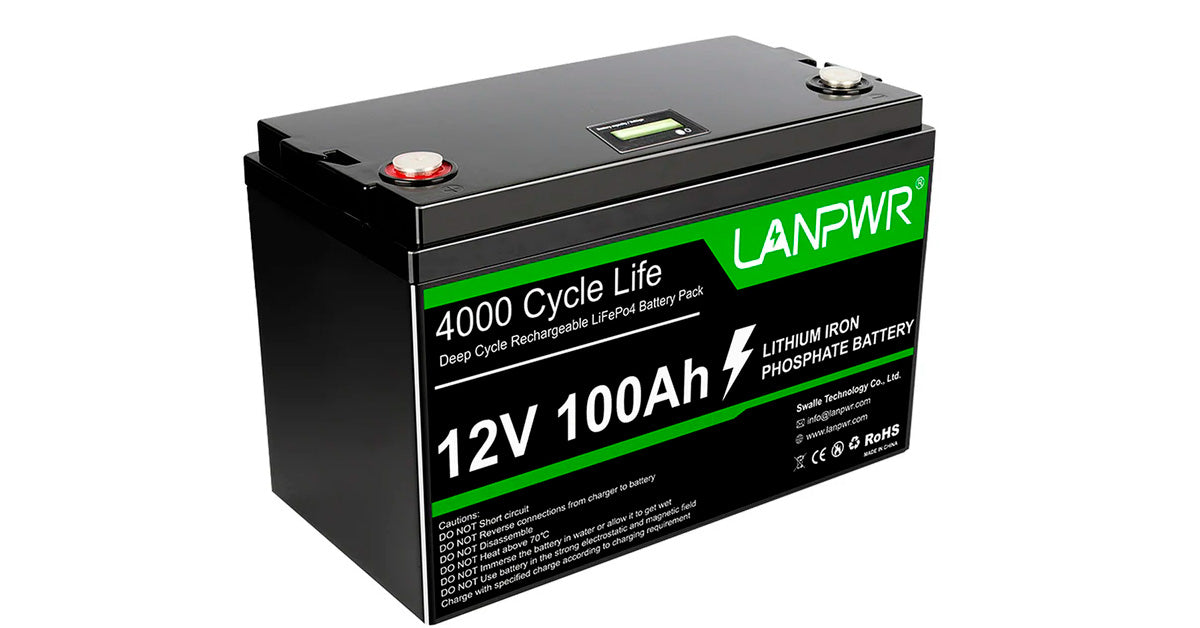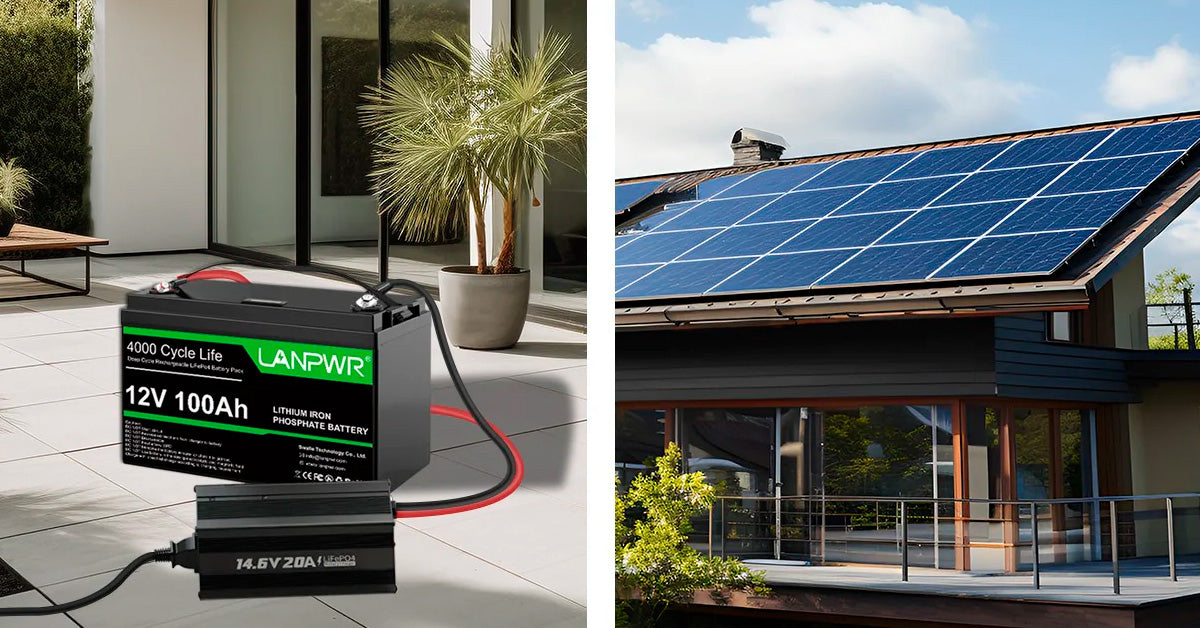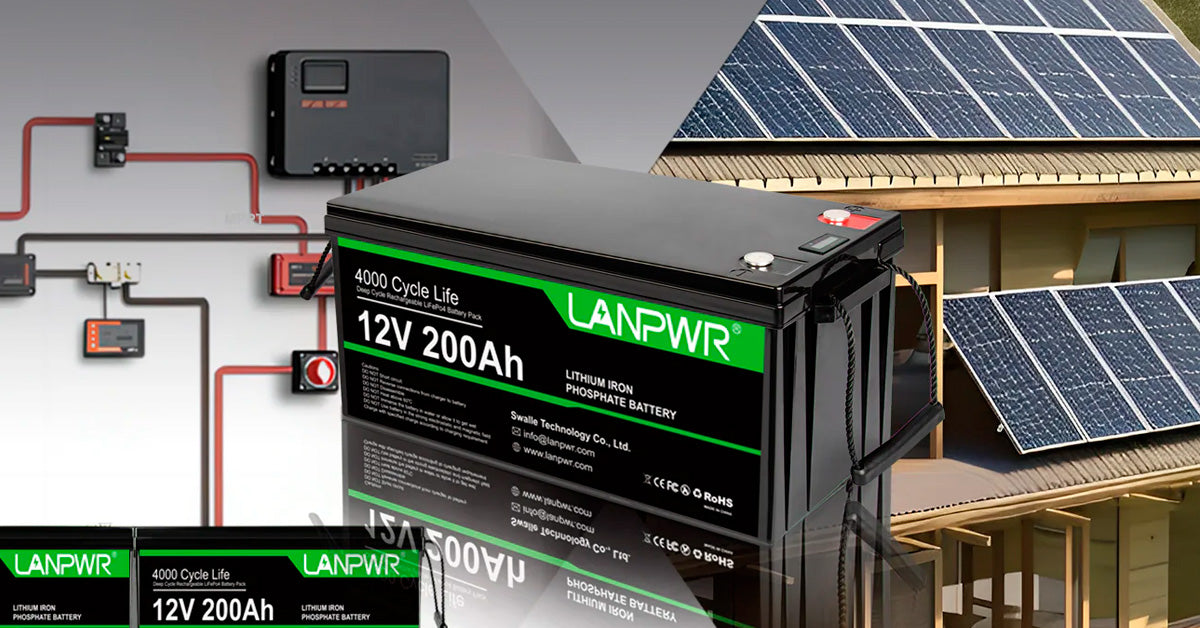Investigates why LiFePO4 batteries, known for their safety and durability, are less commonly used. It examines technological, economic, and market challenges that restrict their widespread adoption, offering valuable information for industry professionals and technology enthusiasts.
Lithium iron phosphate (LiFePO4) batteries are heralded for their remarkable attributes, yet their widespread adoption is not as prevalent as one might expect. This article delves into the characteristics, benefits, and challenges associated with LiFePO4 batteries, offering a comprehensive comparison with other battery types and shedding light on the future outlook for this promising technology.
Understanding LiFePO4 Batteries
The Basics of LiFePO4
LiFePO4 batteries are increasingly recognized as a standout choice within the battery technology landscape, primarily due to their distinctive composition and inherent properties. These batteries differentiate themselves by utilizing lithium iron phosphate as the cathode material instead of the more common cobalt or manganese used in other lithium-ion variants. This choice of cathode material is not just a trivial difference; it is fundamental to the enhanced stability and safety characteristics of LiFePO4 batteries. Here's why this matters:
- Stability: Lithium iron phosphate offers exceptional thermal and chemical stability, which translates into lower risks of overheating and potential thermal runaway—a common concern with other lithium-based batteries.
- Safety: The robust nature of the phosphate-based cathode contributes to the overall safety of the battery, making it resistant to physical and electrical abuse that might otherwise lead to fires or explosions.
- Performance and Longevity: These structural advantages allow LiFePO4 batteries to maintain consistent performance over a longer period, contributing significantly to their lifespan compared to other technologies.
Understanding these core differences is crucial, as it underscores the reasons behind the superior performance and longevity of LiFePO4 batteries, making them suitable for a variety of demanding applications.
Key Advantages
LiFePO4 batteries offer several compelling advantages over traditional battery technologies, which make them an increasingly popular choice in various sectors. These advantages include:
- Environmental Impact: LiFePO4 batteries are more environmentally friendly than many traditional batteries. They do not contain harmful elements like lead or cadmium, which are commonly found in lead-acid and nickel-cadmium batteries, respectively. Additionally, the production process of LiFePO4 batteries generally involves fewer dangerous chemicals and produces less pollution.
- Durability: One of the most significant benefits of LiFePO4 batteries is their ability to endure a high number of charge and discharge cycles with minimal capacity loss. This makes them ideal for applications where batteries are frequently cycled.
- Reliability: LiFePO4 batteries are known for their excellent thermal stability, low discharge rate, and ability to perform under a wide range of temperatures and conditions, making them highly reliable for critical applications.
Advantages and Benefits of LiFePO4 Batteries
Performance and Durability
LiFePO4 batteries have earned a stellar reputation for their remarkable cycle life and deep cycle capabilities. What sets these batteries apart is their ability to sustain prolonged and rigorous use, undergoing numerous charge and discharge cycles with minimal degradation. This attribute is particularly crucial in applications where batteries are expected to provide consistent power over extended periods without frequent replacements. The resilience and longevity of LiFePO4 batteries translate into significant benefits for users, including:
- Reduced Replacement Costs: A longer lifespan means fewer battery replacements, which can lead to substantial cost savings over time.
- Consistent Performance: High reliability in providing consistent power output is vital for critical systems and applications.
- Adaptability: Ability to perform under a variety of environmental and operational conditions, enhancing their usability across diverse applications.
These performance characteristics make LiFePO4 batteries an ideal choice for demanding sectors such as renewable energy storage, electric vehicles, and portable electronic devices where durability and reliability are key.
Safety and Stability
Safety concerns are paramount when it comes to battery technologies, and LiFePO4 batteries stand out for their exceptional safety profile. The inherent stability of lithium iron phosphate mitigates the risks associated with common battery hazards, such as overheating and thermal runaway, which are more prevalent in other types of lithium-ion batteries. Key safety features include:
- Thermal and Chemical Stability: The chemical composition of LiFePO4 provides superior thermal and chemical stability, reducing the likelihood of failure and combustion under stress.
- Lower Risk of Leakage: Unlike lead-acid batteries, LiFePO4 batteries are sealed and solid-state, which minimizes the risk of leakage and environmental contamination.
- Enhanced Endurance: Capable of withstanding high temperatures and harsh conditions without degrading in performance, making them safer for use in sensitive or demanding environments.
This safety profile not only makes LiFePO4 batteries a safer choice for consumer electronics but also for larger-scale applications such as electric vehicles and energy storage systems, where safety cannot be compromised.
Environmental Benefits
The environmental advantages of LiFePO4 batteries are significant, making them a more sustainable choice compared to traditional battery types. These batteries do not contain hazardous heavy metals like lead or cadmium, which are commonly found in other batteries and can cause environmental damage if not disposed of correctly. Key environmental benefits include:
- Eco-friendly Materials: LiFePO4 batteries use phosphate salts, which are less harmful and more environmentally benign than the metals used in many other batteries.
- Longer Life Cycle: Their longer lifespan means that fewer units need to be produced and subsequently disposed of, which helps reduce waste and the environmental impact associated with battery production.
- Recyclability: Higher recyclability compared to other types of batteries, contributes to the conservation of resources and reduction of waste.
These environmental benefits align well with the growing global emphasis on sustainability and carbon footprint reduction, making LiFePO4 batteries a preferred choice for both consumers and industries looking to adopt greener technologies.
Applications and Uses
Broad Range of Applications
LiFePO4 batteries, known for their impressive versatility, are utilized across a wide spectrum of applications, ranging from renewable energy systems to marine applications and remote off-grid setups. The robust nature and high efficiency of these batteries make them particularly suitable for various demanding environments. Their ability to withstand harsh conditions and maintain performance over an extended period highlights their adaptability and reliability, essential characteristics for applications where consistent energy supply is critical.
Specialized Uses
In the realm of advanced energy solutions, LiFePO4 batteries are gaining notable popularity in solar energy storage systems and the burgeoning sector of electric vehicles. Their appeal lies in their high efficiency and substantial capacity to store energy, which is crucial in managing the high-power requirements of these applications. The use of LiFePO4 batteries in these high-demand sectors is not just a testament to their performance but also underscores their significant role in promoting sustainable technology. As these sectors continue to expand, the impact of LiFePO4 batteries is increasingly becoming a cornerstone in the shift towards greener, more sustainable energy practices.

Comparing LiFePO4 with Other Battery Technologies
LiFePO4 vs. Lead-acid
Replacing lead-acid batteries with LiFePO4 can offer substantial benefits, including improved efficiency, longer life span, and reduced maintenance needs. LiFePO4 batteries demonstrate significantly higher energy efficiency compared to their lead-acid counterparts. This is primarily due to their ability to maintain a consistent voltage level throughout the discharge cycle, ensuring that devices operate more efficiently for longer periods. Additionally, LiFePO4 batteries can be discharged deeper without suffering significant degradation, which is a limitation often faced with lead-acid batteries. This attribute not only extends the usable energy capacity but also contributes to the overall life span of the battery.
The cost and lifecycle analysis further support the case for LiFePO4 as a superior alternative. Initially, the upfront cost of LiFePO4 batteries may seem higher than that of lead-acid batteries. However, when considering the longer lifecycle, reduced maintenance requirements, and lower energy costs due to higher efficiency, LiFePO4 batteries often prove to be more cost-effective in the long run. Maintenance for lead-acid batteries typically includes regular checks for water levels and terminal corrosion, whereas LiFePO4 batteries require minimal maintenance. Furthermore, the environmental impact of disposing of lead-acid batteries, which contain hazardous materials, adds hidden costs in terms of ecological damage and cleanup.
LiFePO4 vs. Other Lithium-Ion Batteries
When compared to other lithium-ion variants, LiFePO4 batteries often come out ahead in terms of performance, cost-effectiveness, and safety, making them a compelling option for many applications. LiFePO4 batteries offer a unique combination of long life span, stable performance, and robust safety features which distinguish them from other types of lithium-ion batteries. These batteries are less prone to overheating and are more stable under a range of environmental conditions, reducing the risk of thermal runaway—a common issue in other lithium-ion batteries. This safety aspect makes LiFePO4 particularly suitable for large-scale applications such as electric vehicles and home energy storage systems, where safety cannot be compromised.
In terms of cost-effectiveness, while the initial investment in LiFePO4 technology might be higher, the total cost of ownership is lower over time compared to other lithium-ion batteries. This is due to their longer operational life and minimal maintenance needs. LiFePO4 batteries can typically withstand more charge cycles before their capacity begins to degrade. Furthermore, they maintain a higher efficiency under both high load conditions and during regular operation, which contributes to energy savings and reduces the frequency of battery replacements. This operational efficiency, combined with its safety profile, positions LiFePO4 as an optimal choice for both consumers and industries looking to maximize their investment in battery technology.
Market Analysis and Consumer Choices
In this chapter, we delve into the competitive landscape of LiFePO4 batteries, analyzing key market players and consumer behavior. The analysis is aimed at equipping readers with the knowledge to make informed choices based on a variety of factors, including brand performance, cost, and accessibility.
Best LiFePO4 Brands and Products
Exploring the top LiFePO4 brands reveals a market that is abundant with diverse options catering to different needs and preferences. In selecting the most suitable LiFePO4 battery, consumers are advised to consider the following criteria:
- Performance Metrics: Assess the efficiency, capacity, and durability of the batteries.
- Brand Reputation: Investigate the brand's market presence, customer reviews, and industry awards.
- Product Warranties: Examine the warranty conditions, what they cover, and the duration of the warranty period.
Each of these factors plays a pivotal role in guiding consumers toward making a decision that aligns with their specific requirements and expectations from a LiFePO4 battery.
Affordability and Accessibility
Recent trends in the market suggest that LiFePO4 batteries are gradually becoming more cost-effective, which is a positive development for potential buyers. However, several challenges still hinder their widespread adoption:
- Cost Barriers: Despite the decrease in prices, the initial cost is still prohibitive for some segments of consumers.
- Availability Issues: There are discrepancies in the availability of these batteries in different regions, affecting their overall accessibility.
Addressing these issues is crucial for enhancing the adoption of LiFePO4 batteries. Stakeholders in the industry, including manufacturers and policymakers, must work together to develop strategies that reduce costs and improve distribution networks to ensure that these eco-friendly batteries are within reach of a broader audience.

Installation, Maintenance, and Storage
Charging and Maintenance
Adhering to proper LiFePO4 (Lithium Iron Phosphate) charging guidelines and maintenance practices is pivotal for ensuring the longevity and efficiency of these batteries. Lithium iron phosphate batteries are renowned for their stability and safety compared to other lithium-ion batteries, but they still require careful handling to maintain their performance over time.
To maximize the lifespan and effectiveness of LiFePO4 batteries, it is crucial to follow specific charging protocols. These batteries should ideally be charged at a voltage that does not exceed their limit, typically around 3.65 volts per cell. Overcharging can lead to reduced battery life and potential safety hazards. Additionally, it is important to use a charger that is compatible with LiFePO4 chemistry to ensure that the charging process is controlled and does not damage the battery.
Regular maintenance checks are essential. Users should regularly inspect the battery for any signs of damage, such as swelling or cracks in the casing. Terminals should be kept clean and free from corrosion, as poor contact can lead to increased resistance and inefficiency. It is also advisable to perform periodic balancing of the cells to ensure that each cell in a battery pack charges and discharges at the same rate. This balancing helps maintain the capacity and prolongs the overall life of the battery pack.
Storage Solutions and Tips
Effective storage solutions are crucial for maintaining the integrity of LiFePO4 batteries, especially when they are not in regular use. Properly storing these batteries is essential to prevent capacity loss, prolong battery life, and maintain safety standards.
For optimal storage, LiFePO4 batteries should be kept in a cool, dry environment. Extreme temperatures—both hot and cold—can significantly affect battery performance and lead to faster degradation. The ideal storage temperature for these batteries is between 5°C and 20°C. Moreover, these batteries should be stored at a charge level of around 30% to 50%. This state of charge is optimal for minimizing degradation during storage because it reduces the stress on the battery cells.
It is also advisable to check the battery periodically during storage. A brief inspection every few months to check the state of charge and to top it up if it falls below 30% is recommended. This helps keep the battery in a healthy state and ready for use when needed. Additionally, batteries should be kept away from metal objects and liquids to prevent short circuits and potential damage.
By implementing these storage protocols, users can ensure that their LiFePO4 batteries remain functional and reliable over an extended period, thereby safeguarding their investment and reducing the need for frequent replacements.

Challenges and Barriers
Why LiFePO4 Isn’t More Widespread
LiFePO4 batteries, despite offering numerous benefits such as safety, long cycle life, and environmental friendliness, are not as common as other battery types. Several factors contribute to this limited adoption. Firstly, the manufacturing process for LiFePO4 batteries is more complex and costly compared to other lithium-ion chemistries. This complexity arises from the need for highly controlled production environments and precise material handling, which increases the initial investment and operational costs.
Additionally, there are significant distribution hurdles. The supply chain for LiFePO4 batteries is not as developed as for other types of lithium batteries. This results in lower production volumes and higher prices, which deter widespread consumer adoption. Furthermore, there is a lack of consumer awareness regarding the unique advantages of LiFePO4 batteries. Many potential users remain more familiar with other types of lithium-ion batteries that have been marketed more aggressively and are perceived as more readily available.
Overcoming the Challenges
To increase the prevalence of LiFePO4 batteries, both technological innovations and strategic market shifts are crucial. Technological advancements are needed to simplify the manufacturing process and reduce costs. This could involve developing new synthesis methods that are less resource-intensive or improving the efficiency of existing production technologies. Additionally, enhancing the durability and energy density of LiFePO4 batteries can make them more attractive to a broader range of applications, from electric vehicles to renewable energy storage.
On the market front, creating more robust supply chains and distribution networks is essential. Strengthening these networks can help reduce the costs associated with logistics and, in turn, the retail price of the batteries. Moreover, increasing consumer awareness through education and marketing campaigns that highlight the benefits of LiFePO4 batteries—such as their safety profile and low environmental impact—can shift consumer preferences and demand. Ultimately, these efforts can pave the way for greater utilization of LiFePO4 batteries, harnessing their potential to contribute to a more sustainable and efficient energy future.
LiFePO4 (Lithium Iron Phosphate) batteries stand at the forefront of a transformative shift in energy storage solutions, offering a remarkable suite of advantages that make them increasingly critical in the drive toward sustainable and efficient power management. As these batteries provide higher safety levels, longer life cycles, and environmental friendliness compared to traditional lithium-ion counterparts, they are uniquely positioned to meet the growing global demand for reliable and green energy storage. However, the full exploitation of their potential hinges on broadening consumer and industry uptake, which currently faces hurdles such as higher upfront costs and a lack of widespread understanding of their benefits. To overcome these obstacles, concerted efforts are necessary to enhance public and corporate awareness through robust educational campaigns and to demonstrate the long-term economic and environmental returns on investment in LiFePO4 technology. Furthermore, developing policies that incentivize the adoption of these batteries, improving recycling processes, and investing in research for cost reduction and performance enhancements will be crucial. By tackling these challenges head-on, stakeholders across sectors can catalyze a significant increase in the deployment of LiFePO4 batteries, thereby ensuring they play a pivotal role in the future landscape of energy storage technologies.














Leave a comment
This site is protected by hCaptcha and the hCaptcha Privacy Policy and Terms of Service apply.